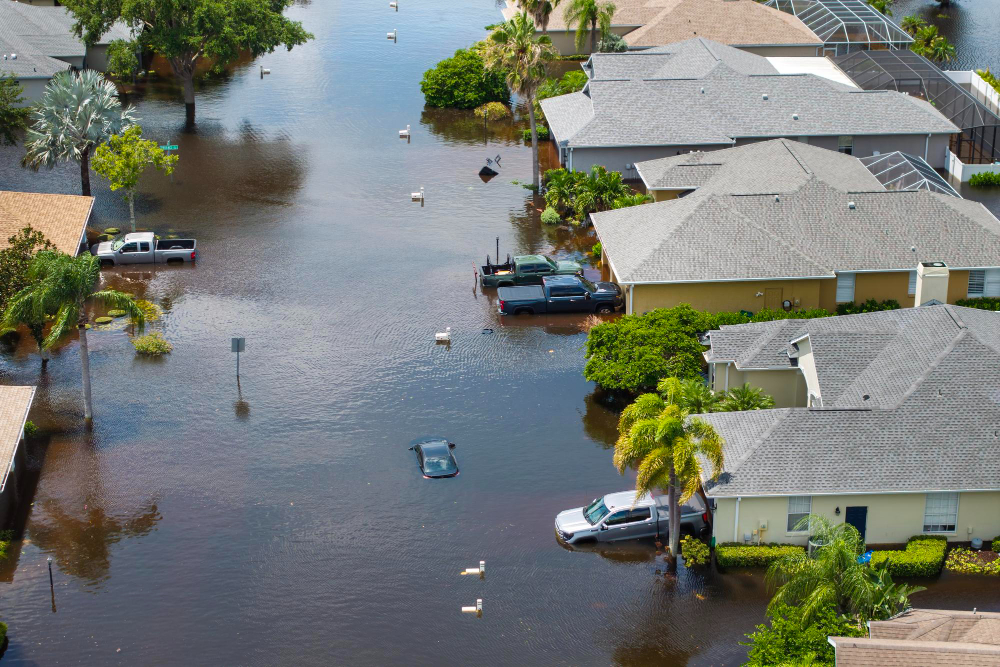Salt water damage is a whole different ball game compared to regular water damage restoration. Whether it’s from a storm, flooding, or accidents at sea, salt water’s corrosive qualities mean you need a special approach and fast action to keep your buildings safe from serious harm.
What Happens with Salt Water Damage
Salt water can mess things up in a bunch of ways, making fixing it tricky. When salt water dries up, it leaves behind salt crystals that keep sucking moisture from the air. This creates a never-ending cycle of rust and decay. Even if things look dry on the surface, there’s a good chance salt is still causing trouble below.
Impact on Different Materials
| Material Type | Salt Water Effect | Time Sensitivity | Restoration Method |
|---|---|---|---|
| Metal | Starts rusting and corroding right away | Critical (Hours) | Use chemicals to neutralize and replace if needed |
| Wood | Can soak in water, warp, or rot | Urgent (24-48 hrs) | Flush with fresh water, control drying |
| Concrete | Can cause rust in rebar and flaking | Moderate (Days) | Pressure wash and apply sealers |
| Drywall | Breaks down and becomes contaminated | Immediate (Hours) | Usually needs to be replaced |
| Electronics | Risk of short circuits and corrosion | Critical (Hours) | Usually can’t be fixed |
Getting Professional Help
The first step in dealing with salt water damage is to check things out thoroughly. Pros use special tools to measure how much salt is in materials and check moisture levels. This helps them see what can be saved and what needs to go.
They also use thermal imaging to see how far salt water has spread through the building. Since salt water behaves a bit differently from fresh water, regular tools might not give the best information. That’s where thermal imaging comes in handy.
The Restoration Steps
Here’s how salt water restoration usually goes:
- Initial Response (0-24 hours): Right away, it’s important to get rid of standing water and start documenting the damage. Salt speeds up corrosion, so timing is super important. The focus here is to remove as much salt water as possible.
- Secondary Response (24-72 hours): After the water’s out, the next step is to flush away salt residue with fresh water. This part has to be done carefully to avoid adding more water damage. Special cleaning solutions help break down salt and stop it from coming back.
- Long-term Restoration (3-14 days): Finally, controlled drying happens using special drying machines meant for salty environments. Regular tests are done to make sure salt levels drop before finishing up the restoration.
Special Gear and Techniques
Restoring salt water damage requires some specific gear. High-pressure fresh water systems help wash away salt from materials, and some chemical treatments neutralize leftover salt. Pro-grade air movers and dehumidifiers work together to create the best drying conditions and help stop salt from crystallizing again.
Tailored Approaches for Different Materials
You can’t fix everything the same way after salt water exposure. For metal surfaces, you might need corrosion inhibitors followed by protective coatings. Wood needs careful cleaning to get rid of salt but without adding more moisture. For concrete, you might have to use special poultices to pull out deep-seated salt contamination.
Keeping Secondary Damage at Bay
Salt water damage can lead to more problems that pop up later on. Keeping track of everything during the restoration is key for insurance and future needs. Pros often set up monitoring programs to watch for:
- Rust in structural parts
- Delayed damage to materials
- Ongoing effects from lingering salt
- Mold growth in salty areas
Long-term Prevention Strategies
If you live in a coastal area, you can take steps to reduce the risk of future salt water damage. This might mean using salt-resistant materials, building protective barriers, and setting up regular maintenance specific to a coastal environment.
Get Your Salt Water Damage Fixed Right
Fleitas Restoration knows how to handle salt water damage, using tried-and-true methods and special tools to tackle the unique issues that come with it. Our thorough restoration process will make sure salt is completely removed and protect your property for the long haul.
For help with salt water damage in Florida, give Fleitas Restoration a call at (386)-478-8001. Our certified team is ready for emergencies 24/7 and uses advanced techniques tailored for salt water damage.






